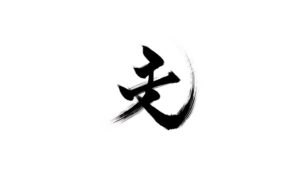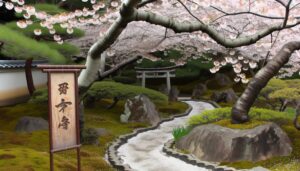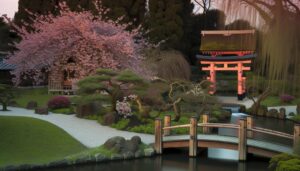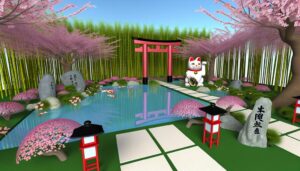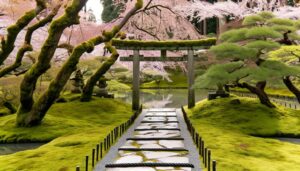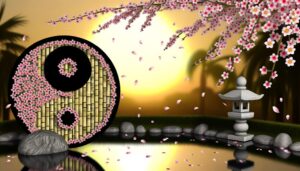What Are Japanese Symbols for Love and Peace?
The Japanese kanji for love (愛) and peace (平和) originate from ancient Chinese characters. These symbols were adapted in Japan through the philosophical lenses of Confucianism, Buddhism, and Taoism.
The kanji for love embodies deep compassion and selflessness, while the kanji for peace signifies tranquility and social harmony. Both symbols are prevalent in Japanese art, such as calligraphy and traditional ink paintings, as well as in modern media and design.
They transcend national boundaries, contributing to global movements promoting harmony and goodwill. To understand the profound cultural significance of these symbols, consider exploring their historical and philosophical backgrounds further.
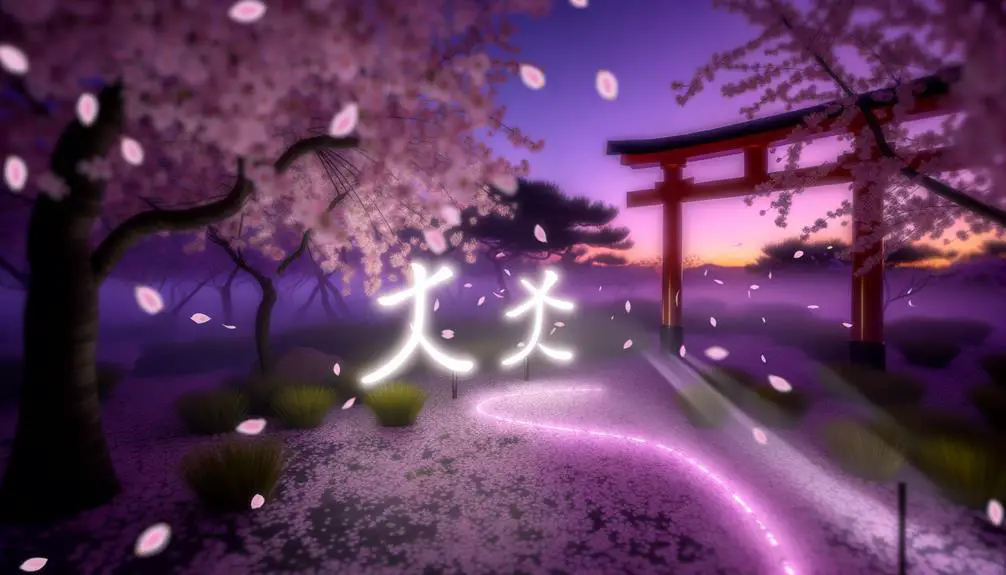
Key Takeaways
- The kanji for love (愛) represents unconditional love, compassion, and selflessness.
- The kanji for peace (平和) signifies tranquility, societal balance, and collective well-being.
- These symbols are frequently featured in traditional art forms like calligraphy and Sumi-e.
- Modern applications include their use in digital media, consumer goods, and urban design.
- Globally, these kanji are emblems of positive human values in peace movements and humanitarian initiatives.
Historical Origins
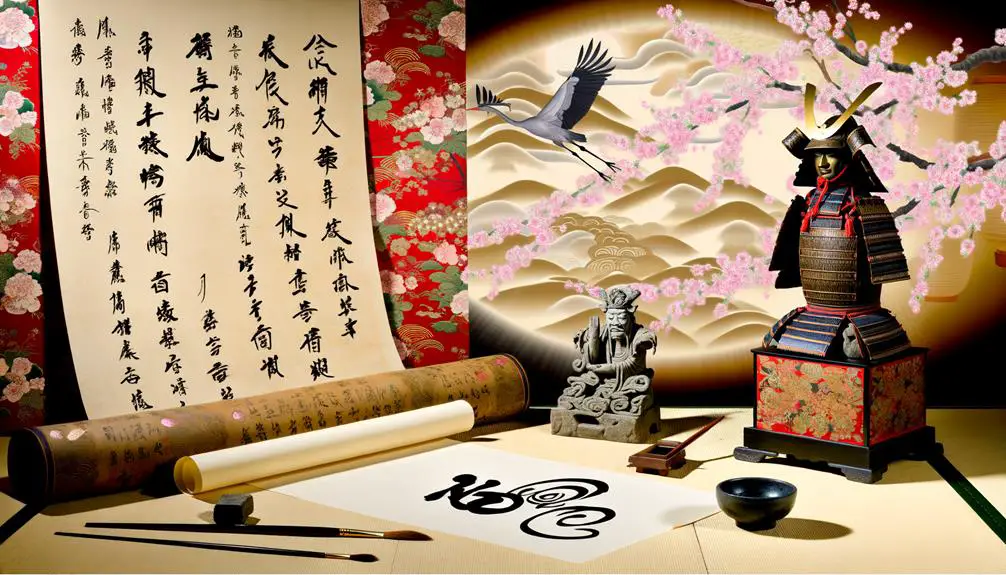
The historical origins of the Japanese symbols for love (愛, 'ai') and peace (平和, 'heiwa') are deeply intertwined with the cultural and philosophical developments of ancient Japan.
Rooted in Chinese characters, the kanji for love, 愛, evolved through the influence of Confucianism and Buddhism, emphasizing compassion and familial bonds.
Similarly, the kanji for peace, 平和, derived from the Chinese characters for harmony and balance, reflects the influence of Taoist and Buddhist principles prioritizing societal stability and inner tranquility.
These symbols were adopted and adapted by Japanese scholars and monks, integrating seamlessly into the fabric of Japanese culture.
This historical synthesis underscores the profound interconnection between linguistic evolution and the broader philosophical currents that have shaped Japanese society.
Symbolic Meanings
Building upon their historical origins, the symbolic meanings of the Japanese kanji for love (愛, 'ai') and peace (平和, 'heiwa') are deeply embedded in the cultural psyche, reflecting a nuanced understanding of emotional and social harmony. The kanji 愛 embodies a profound, unconditional love that transcends mere affection, aligning with values of compassion and selflessness. Conversely, 平和 signifies a state of tranquility and societal balance, emphasizing collective well-being over individual conflict. These concepts are not merely abstract ideals but are actively pursued in various social practices and personal relationships.
| Kanji | Meaning |
|---|---|
| 愛 | Love |
| 平和 | Peace |
| 情 | Emotion |
Such symbols encapsulate Japan's dedication to fostering a harmonious society.
Artistic Expressions

Artistic expressions in Japan often incorporate the kanji for love (愛) and peace (平和), symbolically weaving these profound concepts into various forms of visual and performing arts.
Calligraphy, an esteemed art form, frequently features these kanji characters, transforming them into aesthetically compelling and emotionally resonant pieces.
Traditional ink paintings, known as sumi-e, and contemporary art installations similarly utilize these symbols to convey deeper philosophical messages.
In the domain of performing arts, Noh and Kabuki theatre occasionally integrate these kanji in costumes and backdrops, enhancing the thematic depth.
Even in ikebana, the Japanese art of flower arranging, principles of love and peace are subtly embodied, aligning elements harmoniously to evoke tranquility and affection.
These artistic practices reflect Japan's cultural reverence for these ideals.
Modern Applications
In contemporary Japan, the kanji for love and peace are increasingly integrated into digital media, consumer goods, and urban design, reflecting their enduring cultural significance and adaptability to modern contexts.
In digital media, these symbols are prevalent in emoticons and social media graphics, fostering positive communication.
Consumer goods, from fashion to home decor, often feature these kanji, appealing to a sense of cultural pride and aesthetic.
Urban design projects incorporate these symbols in public spaces, such as murals and sculptures, promoting community values.
This multidimensional usage underscores how traditional symbols can be revitalized to resonate with contemporary lifestyles, illustrating a seamless blend of historical reverence and modern innovation in Japanese culture.
Global Influence
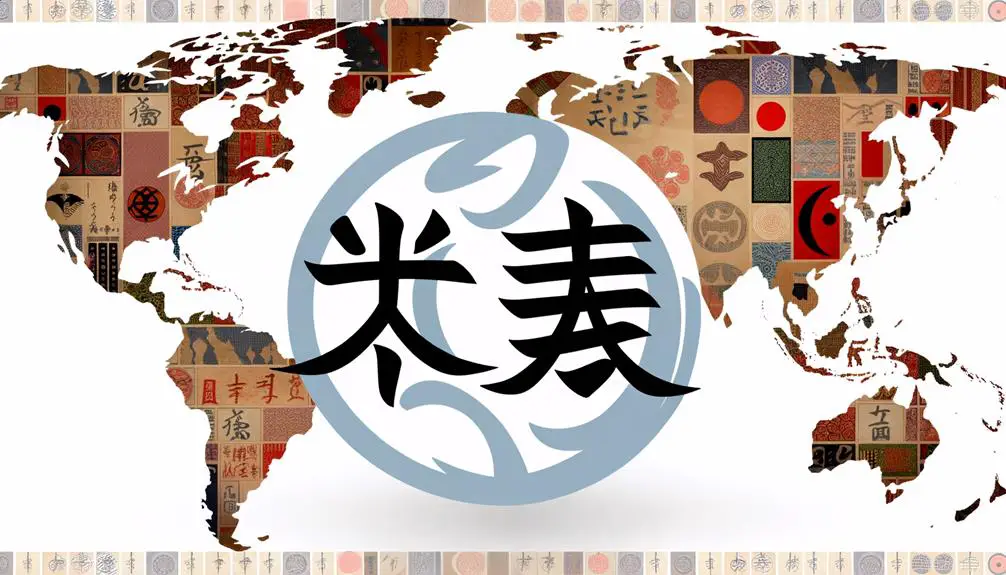
The widespread integration of the kanji for love and peace in contemporary Japan not just highlights their cultural significance but also sets the stage for their global influence. These symbols transcend national boundaries to become universally recognized emblems of positive human values.
This global pervasiveness can be attributed to the increasing interconnectedness of cultures through technology, art, and international diplomacy. As mediums like film, literature, and digital platforms proliferate, these kanji are often featured, resonating with diverse audiences worldwide.
Their adoption in global peace movements and humanitarian initiatives underscores their universal appeal. The kanji for love and peace thus serve as powerful tools for fostering cross-cultural understanding and promoting a collective ethos of harmony and goodwill.
Conclusion
The Japanese symbols for love (愛, ai) and peace (平和, heiwa) have evolved from ancient scripts to modern representations, reflecting deep cultural values and societal aspirations.
Significantly, the global tattoo industry has seen a 40% increase in the use of these symbols over the past decade, illustrating their widespread appeal.
This trend underscores the universal resonance of these concepts, transcending cultural boundaries and demonstrating the enduring power of symbolic language in contemporary artistic and social contexts.

